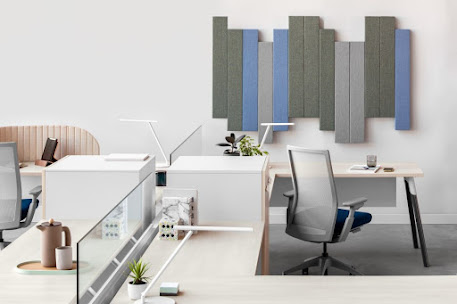Hubs: The Solution to Your Future Office Strategy
In the aftermath of the pandemic, many companies are rethinking the size, function and location of their office space. When redesigning your office space, it’s not just about creating a practical and attractive space that reflects your brand – it’s also about strategically positioning your office for the current and future work environment.
For the commercial office construction specialists at BE Builds, this means focusing your future office strategy on something we call “Hubs.” This strategic trend is suited to companies of all sizes who have realized that maybe everyone doesn’t have to be in the office at all times, and that with some creative scheduling, office spaces can be re-tasked and reinvented, giving your business the ability to fit into smaller spaces with smaller co-resident teams.
Here’s some insight into how BE Builds is working with companies all over the New York area to help them understand how hubs will fit into their future office strategy.
The Hub Office Design Evolution
The hub-and-spoke office design is nothing new – in fact, organizations have been using it for decades, creating central headquarters for corporate tasks that are surrounded by multiple satellite offices that are region or task-specific. However, this design concept has evolved further to meet the needs of a post-COVID work environment, balancing the benefits of remote working with the undeniable need for office space. Here’s how things have changed:
- Size – Enterprises have realized that having a massive central hub isn’t always necessary, and that downsizing to a tailored and functional design has considerable organizational benefits, including significant cost savings in terms of rent, energy use and other operational costs.
- Function – The function of the hub has changed too, becoming a stronger support system and environment for flexible workers. This functionality should obviously be customized to specific business and industry requirements. This Means creating more collaborative spaces for corporate employees to utilize when they need to come into the office, allocating more space for hotdesking or touchdown stations, so that employees can shift in and out of the hub as needed, or creating multi-use and team spaces where people can focus on tasks away from the distractions of home.
- Location – As hub size and functionality have evolved, so have opportunities to move to new hub locations. Enterprises have started realizing key opportunities for restructuring by moving hubs to new locations, from reduced operational and rental costs to situating hubs closer to key logistic, production or talent-rich areas.
Industry innovators are already jumping on board to take advantage of the newly evolved hub-and-spoke office design strategy, including Facebook1, which is offering employees the option to work wherever they want while balancing this freedom with multiple open satellite offices where employees can work if they choose, hold meetings, get facetime or simply network.
Amazon is also taking the plunge2, investing $1.4 billion into creating remote working hubs to allow employees to collaborate as well as work remotely as needed. This system is a dramatic shift from their previous drive to get employees to move closer to headquarters, and it’s anticipated that up to 50% of their staff could fall into these more remote hub-and-spoke systems over the next few years.
Creating More Productive Spaces Where Employees Want to Work
With remote working on the rise, enterprises are understandably concerned about the impact of virtual workplaces on employee productivity and engagement, as well as the ability to create a cohesive and energetic workplace culture. Interestingly, so are employees!
In fact, as many as 3 in 4 U.S. office workers3 report that they want to return to the office for 2-3 days per week, while around 25% of those surveyed want to return full-time. According to a report by Gensler4, just 12% of office workers were happy to make their remote working situation permanent. Clearly, the dream of working from home did not deliver what people expected.
The reasons for employees wanting to return to the office also play a vital role in the delivery of an effective and strategic office space, with employees citing offices as essential for scheduled meetings with colleagues, socializing and bonding with team members, having that all-important one-on-one face time and to become a part of the workplace culture.
The evolved hub-and-spoke design that commercial office construction services can create and deliver, serves these exact purposes. Creating spaces that balance the benefits of flexible working and remote working technology with the very real need for productive, engaged and effective workspaces.




Comments
Post a Comment